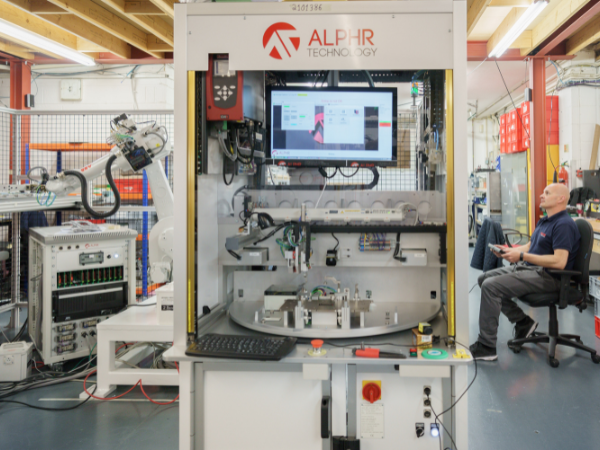The clock is always ticking in automotive manufacturing. Deadlines are tight, margins are tighter, and expectations keep climbing—especially in infotainment, where vehicles are now judged as much by their software experience as their drive quality. Speed isn’t just a competitive edge anymore; it’s a baseline requirement.
Yet many manufacturers are still running into the same old bottlenecks—manual testing, fragmented workflows, and systems that weren’t built to flex. If you’re trying to meet ambitious launch dates with outdated processes, you’re already behind. The answer isn’t to push harder—it’s to build smarter. That’s where automation steps in.
At ALPHR, we see automation as the foundation for faster, more responsive production. But speed is just the beginning.
Outdated Processes Are Costing You Speed
The traditional product development lifecycle is under strain. OEM expectations are evolving quickly, particularly in infotainment, where consumer-grade experiences—instant responsiveness, seamless integration, constant updates—are now expected in-vehicle. But with increased complexity comes increased testing requirements, and that’s where many manufacturers stumble.
Manual or semi-automated testing environments introduce delays through human error, inconsistent output, and rework loops. Fragmented processes between programming, functional testing, and end-of-line verification lead to redundancy and inefficiency. The result? Delays, inflated costs, and missed opportunities in fast-moving markets.
Automation Accelerates Everything
By integrating automation into the full production and testing process, manufacturers can compress timelines across multiple stages—from validation through to final quality checks.
Here’s how automation drives faster time to market:
- Parallelisation of processes: Automation enables the simultaneous execution of tasks that were previously linear—programming, diagnostics, and functional testing can occur within the same cell.
- Reduction in manual errors: With intelligent machine control, repeatability and reliability are no longer dependent on operator experience.
- Real-time data feedback: Automated systems generate production data in real-time, supporting rapid decision-making and proactive quality control.
- Modular flexibility: Customisable and scalable test platforms can be rapidly adapted for new product variants, avoiding the need to start from scratch with every new launch.
Instead of building a new workflow for each product revision, advanced automation platforms are designed to flex and evolve with the product roadmap—supporting faster engineering validation cycles and reducing requalification time.
Why End-of-Line Testing is Essential
One of the most significant sources of time loss in infotainment production is the final test phase. It’s also where risk is highest—if errors go undetected, they’re passed into the market, and if tests fail too late, costly rework and investigation are required.
Automating end-of-line (EOL) testing ensures consistency and speed where it matters most. Fully integrated EOL cells with built-in diagnostics, traceability, and smart tooling allow for:
- Quicker identification of failure points
- Faster fault resolution and recovery
- Reduction of rework cycles
- Minimised human handling and intervention
Critically, with the right system architecture, EOL automation doesn’t just test the unit—it improves the upstream process by feeding back insights that reduce defects at source.
Speed Without Compromising Quality
One of the misconceptions about automation is that it’s all about speed at the expense of flexibility or quality. In reality, when designed correctly, automation enhances all three. By embedding flexibility at the core—through interchangeable tooling, software standardisation, and data-driven control—manufacturers gain the ability to switch seamlessly between products, variants, or regional specifications without downtime.
Automation also brings transparency. Every interaction, test result, and output parameter is recorded. This traceability not only improves quality assurance but also shortens time spent troubleshooting when issues arise.
The Role of Global Scalability
Automation systems that are modular, repeatable, and standardised can be deployed across multiple sites with minimal adaptation. That means new production lines or satellite plants can ramp up faster, using a proven blueprint rather than building from the ground up.
This global repeatability is essential for Tier 1 infotainment suppliers who are servicing OEMs across multiple regions. With the right automation architecture, manufacturers can deliver the same high-quality product from Detroit to Munich to Shenzhen—without introducing delay or inconsistency.
Designing for Speed, Built for What’s Next
As infotainment systems evolve with software-defined vehicle architecture, automation isn’t just a means of delivery—it becomes an enabler of innovation. Fast, reliable testing environments allow manufacturers to bring software updates and new user interfaces to market at a cadence that mirrors consumer electronics, not traditional vehicle development cycles.
Automation systems that are data-integrated and modular don’t just reduce time to market for current products—they support the agility needed for next-generation platforms, over-the-air updates, and real-time customisation.
At ALPHR, we design and deliver intelligent automation platforms that help Tier 1 manufacturers reduce time to market without compromising quality or control. With 30 years of global experience, our systems are built to scale, adapt, and perform—empowering customers to innovate faster and stay ahead of what’s next.


